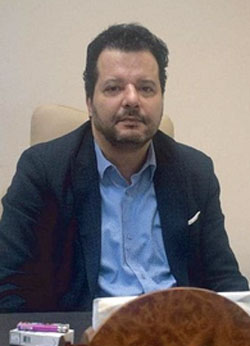Tunisian police block protest of anti-LGBT law
Colin Stewart is a 45-year journalism veteran living in Southern…

Tunisian police on Jan. 27 shut down a protest seeking less repressive laws, including repeal of the country’s anti-gay law. Police claimed they disrupted the demonstration to protect the protesters.
Tunisian Police Shut Down Dissent
LGBT and Secular Protestors Targeted
When Tunisian police shut down a planned demonstration on January 27, they claimed they did it for the protesters’ safety. “We had information that they were going to be targeted,” said an interior ministry spokesperson, according to news reports.
The rallying call of Saturday’s protest, organized by the secular group Association des Libres Penseurs (Association of Free Thinkers), or ALP, was “Sayebni” –“let me be” in Arabic. Organizers knew some of their demands might be controversial: freedom of conscience, gender equality, and the elimination of “retroactive laws” such as section 230 of the penal code, which criminalizes consensual same-sex conduct, and section 52, which imposes harsh sentences for cannabis possession and use.
But the authorities’ claim they were looking out for activists’ own good doesn’t hold water. International law obliges governments to take necessary steps to ensure peaceful protests can take place in safety and security. That may mean providing police protection to protesters in order to prevent any security incidents that might arise, such as attacks by violent counter-protesters.

Mounir Baatour, an activist working with ALP and the lesbian, gay, bisexual and transgender (LGBT) rights organization Shams, told Human Rights Watch that the Association of Free Thinkers notified the authorities of the planned protest, as required under Tunisian law, on January 24. On January 26, after Shams publicly supported the protest and put out a call for LGBT people to attend, Interior Ministry officials summoned ALP’s president and told him the protest was prohibited, without further explanation. “There was no security threat. It’s because the authorities are homophobic.”
The forceful dispersion of protestors suggests authorities’ objections to the demonstration extended beyond participants’ “safety.” Baatour said police shoved and hit several LGBT protestors, twisting the arm of the director of Shams. Police briefly detained, without charge, two activists for attempting to wave a rainbow flag.
“Tunisia has, at times, allowed for demonstrations critical of government policy, but Saturday’s shutdown – following on the heels of a range of police abuses during protests in early January over the adoption of austerity measure – raises questions about the depth of Tunisia’s commitment to the fundamental right to peaceful protest.”
The Tunisian authorities cannot pick and choose. Abiding by their international human rights obligations means allowing diverse voices to be heard – including the voices of sexual and gender minorities.
This article is also available in Arabic.
Related articles:
- Tunisia gets its first queer film festival (
- Tunisia: LGBT online radio undaunted by 5,000 threats (
- Tunisia drops anal tests, but not its anti-gay law (September 2017, 76crimes.com)
- 2 arrests in Tunisia; protests block anal tests (December 2016, 76crimes.com)
- U.N. panel to Tunisia: Stop forced anal exams (May 2016, 76crimes.com)
- Tunisia: Protests against anal exam, sodomy sentence (September 2015)
- Tunisia: Teen gets 4-month sentence for homosexuality (June 2017, 76crimes)
- Tunisian police make LGBT arrests based on Facebook (April 2017, 76crimes.com)
- Q. Can Tunisia’s only queer shelter be saved? A. Yes (April 2017, 76crimes.com)
- Tunisian filmmaker, student jailed on gay-sex charges (March 2017, 76crimes.com)
- Tunisia: 2 months in jail for 2 men for behaving like women (March 2017, 76crimes.com)
- 2 young Tunisians sentenced to 8 months for gay sex (March 2017, 76crimes.com)
- New coalition in Tunisia fights for LGBTQI rights (February 2017, 76crimes.com)
- Tunisian judge jails trans woman pending indecency trial (January 2017, 76crimes.com)
- Jan. 6 trial in Tunisia for being gay on the street (December 2016, 76crimes.com)
- Tunisian police arrest and humiliate trans youth (November 2016, 76crimes.com)
- Amid democratic reforms, deeper troubles for LGBT Tunisians (October 2016, 76crimes.com)
- Homophobic attack on LGBTI rights defender in Tunisia (August 2016, 76crimes.com)
- Tunisia: Attack targets LGBTQ activist from Shams (April 2016, 76crimes.com)
- Appeal for an end to anti-LGBT campaign in Tunisia (April 2016, 76crimes.com)
- Human rights advocates decry 3-year sentences in Tunisia (December 2015, 76crimes.com)
- Tunisia: Death threats against LGBT activists (December 2015, 76crimes.com)
- Tunisian LGBT rights group under attack (December 2015, 76crimes.com)
- Tunisian justice minister seeks repeal of gay sex ban (September 2015, 76crimes.com)
- Tunisia: Protests against anal exam, sodomy sentence (September 2015, 76crimes.com)




